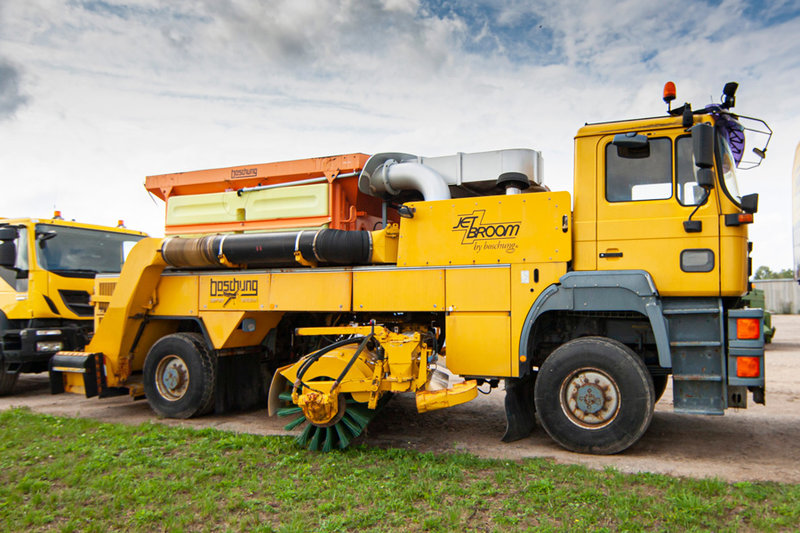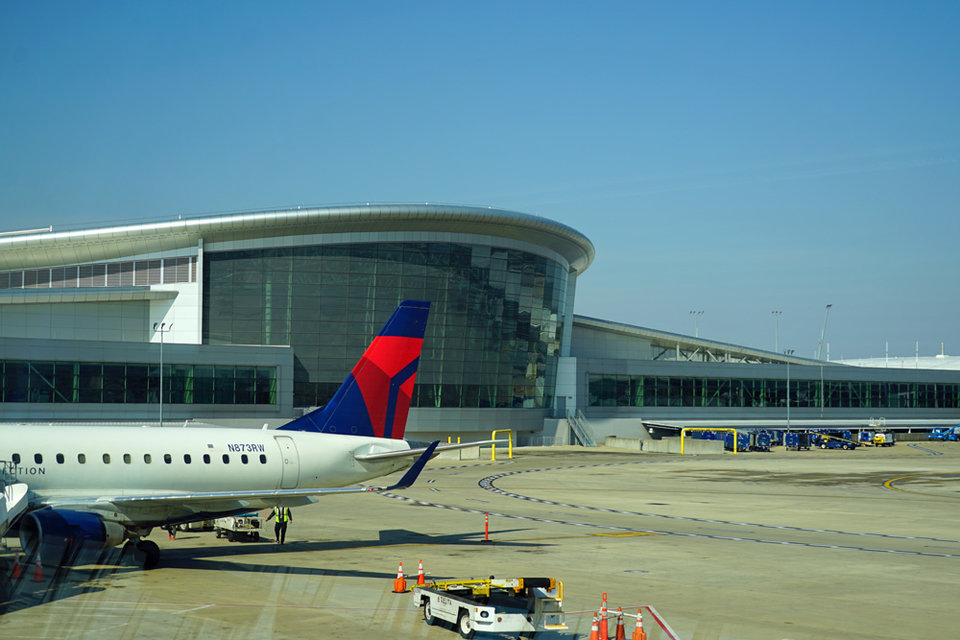Winter Operations
Winter is coming: five innovative snow removal technologies at airports
Extreme snowfall can cut an airport's ability to handle the arrival and departures of aircraft in half, resulting in many cancelled flights, or worse, serious accidents. Varsha Saraogi highlights five innovative technologies for clearing snow and ice.
The aviation industry has been investing significantly into technologies aimed at tackling the unpredictability of climate, effects of global warming and weather mitigation. According to ResearchandMarkets.com, the airport snow and ice management equipment market was valued at $2.3bn in 2017 and is estimated to grow by 2.75% from 2018 to 2026.
Many airports have gone above and beyond to ensure smooth operations in extreme conditions. For instance, Stockholm Arlanda Airport uses more than 100 pieces of equipment to get rid of snow with a combination of snow blowers, ploughs, loaders, brooms, sprayer trucks and de-icing chemicals and agents. As a result, it has never once been shut down by snow.
However, hubs like JFK and Heathrow tend to grind to a complete halt in the face of extreme weather conditions. In February 2018, dozens of British Airways flights departing from Heathrow Airport were cancelled when the UK was hit by the ‘Beast from the East’ – also known as Anticyclone Hartmut - and this inevitably had a knock-on effect for passengers.
As a result, it is increasingly important for airports to incorporate machinery and equipment specialised for ice and snow removal.
Caption.
Image courtesy of
Yeti Snow Technology driverless snowploughs
Yeti Snow Technology is an autonomous snowplough built by Swedish product development firm Semcon and Norwegian equipment manufacturer Øveraasen. It was tested in March 2018 at Norway’s Fagernes Airport, and more recently in September 2019 at Sweden’s Örnsköldsvik Airport. The 20m-long, 5.5m wide driverless snowploughs are capable of clearing 357,000m2 of snow every hour.
Image courtesy of Yeti Snow Technology
The company claims that it is the first time large vehicles have been adapted to autonomously keep runways clear from snow. One of the main unique characteristics of these modern vehicles is that they are designed to work under extreme conditions and low visibility. In the long run, the technology aims to help other airports remain open and reduce delays for passengers.
“Every minute a plane is parked is precious. We see great potential for gains in accessibility, but also for the environment and safety because the machine is self-driven,” Semcon general manager Hans Peter Havdal said in a statement.
The city declined a $4m offer from private investors to construct a new terminal and hangars on the site
Mercedes Benz Arocs snow trucks
In 2017, German motor vehicle manufacturer Daimler launched a fleet of self-driving Mercedes-Benz Arocs snow trucks, which communicate via real-time data exchange. The fleet is networked via encrypted signals through its Remote Truck Interface, as well as a control panel in the leader vehicle, which allows a single operator to control vehicle functions.
The vehicles work by following a leader truck, which moves along a pre-mapped GPS route. Each truck is interchangeable, and any truck can be at the front of the convoy at any given time.

Image courtesy of Daimler
Equipped with all-wheel drive functionality and a plough that’s 26ft wide, 75ft long and weighs 27t, the vehicle also has a sweeper at the back, which ensures it cleans up any residual snow left by the plough.
These trucks are designed for circumscribed areas and have built-in emergency safety measures. As an airport is constantly busy with personnel, luggage carts and fuel trucks, these vehicles are designed to identify any machine or people which might be in its way.
These autonomous vehicles were tested in 2017 at a former German airbase near Frankfurt, with the help of airport management company Fraport AG.
Fresh investment in the existing infrastructure at Detroit Airport could play an intrinsic role in the city’s ongoing recovery
Swiss Boschung Group’s Ice Early Warning System
Operating since the 1950s, the Boschung Group creates snow and ice removal machinery, such as blowers and ploughs. The company boasts of solving winter woes for numerous airports, including Munich, Moscow, Chicago O’Hare and Dalian Zhoushuizi in China, among others.

Image courtesy of Karolis Kavolelis / Shutterstock.com
The company’s Ice Early Warning System facilitates data acquisition, transmission and evaluation. The sensors transmit data to a remote-controlled measuring station with information about precipitation intensity, visibility, air temperature and relative humidity. Upon analysing the data, an alarm is triggered if necessary as a warning.
Once the Boschung Ice Early Warning System has identified a need for action, an immediate response can be taken via an automated spraying system or special vehicles, such as de-icers, blowers, snow boosters, spreaders and sweepers.
Many local governments don't understand the long-term benefit to their community of an airport
Kodiak America’ snow sweeping machine
With a product line including snow blowers, runway sweepers, and push ploughs, Kodiak has manufactured snow removal equipment for clients across the US, including state and government agencies, highway departments, ski resorts and oil fields.
In particular, the company’s snow sweeping machine for airports has the same chassis that powers double-engine snow blowers, making it easy to remove snow quickly. The sweepers can cover a 22ft wide path at over 35mph to clean runways. It works using an internally mounted air blast system with retractable swing arms that sweep high air behind the blower head. The air blast automatically reverses when the broom angle changes. A lifting head cover allows the operator to dump any accumulation of snow on top of the blower head.

Kodiak’s runway sweepers are in use at Indianapolis International Airport. Image courtesy of EQRoy / Shutterstock.com
Currently being used at Indianapolis International Airport, Kodiak’s airport runway sweepers are also able to remove dirt, sand, and debris from runways in tropical and warmer weather locations.
Fresh investment in the existing infrastructure at Detroit Airport could play an intrinsic role in the city’s ongoing recovery
Airline Services’ in-house de-icing chemical
Airline Services produces its own de-icing fluid in customised plants installed at each airport to ensure that there is enough reserve of the fluid in peak winter months. The plant automatically processes the fluid by mixing and heating it so it can be used as and when required.
Airline Services serves numerous airport clients in the UK, including Heathrow and Gatwick, as well as airline companies such as Virgin Atlantic, British Airways and Lufthansa.

The firm has invested more than £3.6m in JBT’s closed cabs or ‘Tempest Deicers’– a de-icing vehicle which is used to spray the de-icing chemical to remove ice and snow from aircraft surfaces. The company uses 70 de-icing cabs, and 300 fully trained personnel and services over 240 aircraft. The firm claims its de-icing solution works for all type of aircraft, including the A380.
Many local governments don't understand the long-term benefit to their community of an airport